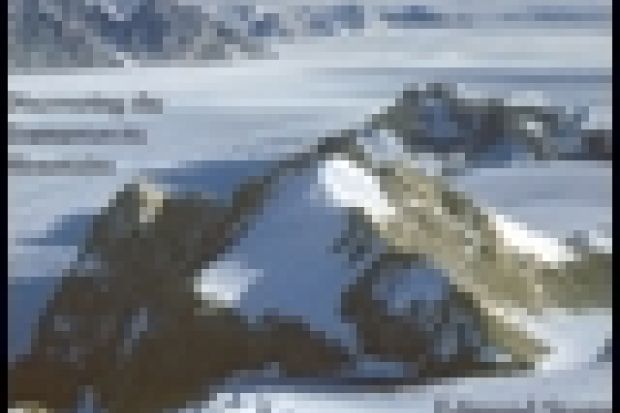This is really three different books inside one cover. First, we have a history of the discovery of the Transantarctic Mountains from the age of James Clark Ross' first sightings in 1841 to the International Geophysical Year of 1957. Second, there are two sets of illustrative material: modern maps on which Edmund Stump has superimposed impressive route maps showing where Robert Scott and his successors travelled on their various traverses in the "heroic age" of Antarctic exploration, coupled with wonderfully lavish photographs of what they saw. Then finally there is a collection of inset boxes wherein Stump, a veteran of 40 years of Antarctic research, offers memoirs about working in this harshest of all environments. Each thread has its virtues, but they do not quite mesh into a coherent whole.
Take the interrelationship between the narratives of the "heroic" age of Antarctic exploration from Ross to Roald Amundsen, which at 150 of 240 pages of text comprise the bulk of the work, and the beautiful illustrative photographs and maps. Beguiling as the illustrations are, they bespeak a different Antarctic from that encountered by those who first ventured there. Stump's photos are always - for obvious reasons - in conditions when the weather is smiling, but more importantly, they are almost always images "from above". The images are from atop the mountains to which the age of airborne exploration has granted us access. But the Antarctica the early explorers knew, as Stump's narrative makes clear, was ground based, a low-angle perspective. And then there are the maps. Scott et al. were venturing into the unknown, not aware of how glaciers, outlets, crevassed fields and peaks seen from afar connected to form a complete landscape. Stump's maps, of course, are from the era in which these mysteries have been unravelled. Consequently, the images and maps jar somewhat with attempts to understand what it was to be an explorer of these mountains, the subject of the narrative they illustrate.
There is also the question of the narrative style and balance of the book. Stump's writing is rather akin to the experience he narrates of crossing an intense crevasse field. So much detail is given that the reader can struggle to move forward; head down in concentration, the larger narrative landscape is sometimes lost to view. But from time to time, Stump does emerge from this level of detail to offer a more panoramic vision in a more easily digestible style. This is most notably the case in his accounts of his own experiences. Putting these elements together, the writing of the book is rather uneven: we have both "Amundsen's matter-of-fact writing style" and "Scott's eloquence" within the same covers.
In terms of balance, there appears to be a disjunction between the space given to the efforts of the early explorers and their achievements in terms of discovering the Transantarctic Mountains, the actual subject of the book. For all their interest in geology, it is clear that participants in early expeditions were uncertain whether they were encountering a mighty mountain range (as we now know they were) or isolated peaks. And yet the bulk of the book is devoted to their expeditions, none of which took as its prime task mapping the mountains. When we get to those who did have that pursuit as a core mission - namely the two Richard Byrd expeditions and the efforts undertaken by International Geophysical Year teams - they are treated rather hastily considering their cartographic achievements. Granted, the airborne phase of Antarctic exploration can sound less heroic, but as Stump's accounts of his own exploits show, it is no less interesting. It is a shame, therefore, that it is not given equal measure.
One of Stump's best autobiographical vignettes relates to his 1985-86 ascent of Mount Markham, a first in Antarctic exploration. He recounts an "eerie incident" when a skua, 500 miles from its oceanic habitat, "sat there calmly watching me...squatted inscrutably beneath the gathering gloom". It is hard not to hear an echo of Coleridge's ancient mariner here. If The Roof at the Bottom of the World is the view of hubris, perched above the landscape, and thus does not quite recapture the struggles with nemesis that Scott et al. faced on the ground, Stump could quite rightly reply that mine is the hubristic review of an armchair geographer who rarely climbs a hill more forbidding than those found in the Cotswolds!
The Roof at the Bottom of the World: Discovering the Transantarctic Mountains
By Edmund Stump
Yale University Press, 2pp, £25.00
ISBN 9780300171976
Published 15 December 2011
